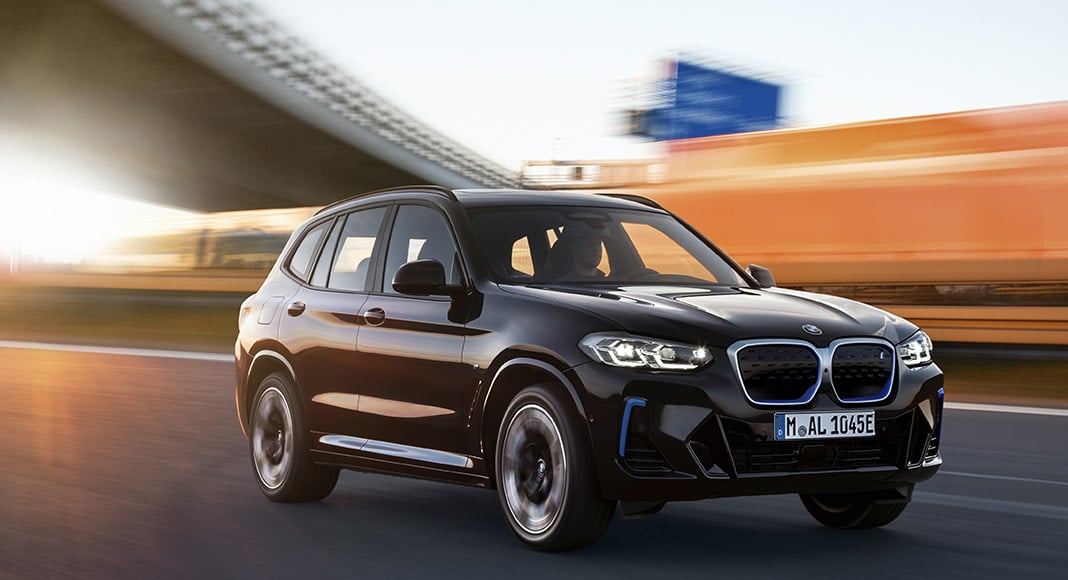Life with an electric car is something we all must probably get used to and faster than we thought. I lived mine with a BMW iX3 for a week.
The iX3 is an important car for BMW in more ways than one. It is the first one built in China for export markets and it sits on the regular X3 CLAR platform, which means the X3 is the first ever BMW to be offered in petrol, diesel, plug-in hybrid and fully electric variants.
It uses not two but just one electric motor, making the drivetrain 30% smaller than the one found in the i3, a car ‘half’ the size of the iX3. Power is transferred to the rear wheels via a single-speed gearbox and a very clever differential.
While we are on the subject of power, the 286 horsepower and 400 Nm of torque won’t make the iX3 a sports SUV, but they are more than up to the task and, besides, this is a car whose bigger quality is not its performance or dynamics, but the refinement you get in every journey. Its almost zen-like comfort is truly incredible.
There are myriad driving modes and configurations, some more relevant than others. In High energy recuperation mode, you can drive the iX3 with one pedal and always harvest the greatest amount of energy from the coast function without any frictional losses. The brake is really only for immobilising the car in such a mode. Weird at first, I reckon, but you get used to it and, besides, this is not a car for driving thrills.
The cabin is standard X3 apart from the instrument graphics and switches dedicated to the electric propulsion. Boot is 40 litres down on a combustion engine model at 510 litres but gains 60 litres when compared to the hybrid version. Quality is typical BMW. It may be made in China, but this is still a German car.
I did 600km in the BMW iX3. That is the most I have ever done in an electric press car. Because this is not a small or compact city car, I said to myself I would use this car as I use my diesel BMW 325d Touring – for trips and everything – and that’s precisely what I did. Results were quite interesting.
First of all, the autonomy of an everyday electric car is something you need time to really understand; how to maximise it, how to use the different driving modes; what uses more range than you would expect, what uses less, etc. You need time to modulate and adapt your driving style to the abilities of the electric propulsion system so that the car fits into your daily routine.
Now, the biggest problem, obviously, is motorway kilometres. They drain out the battery quite fast, unless you stick to around 110km/h. In other words, stick to the legal speed limit and everything will be fine. But that is easier said than done and the so-called range anxiety is always around the corner. Like I said, it takes time to deal with it and learn how to use the car.
Unless you have a wall-box at home or a supercharger at work, a normal domestic socket will give you just 10km for every hour the iX3 is plugged-in. That means that if you arrive home at 18:30 and are leaving the next day at 07:30, the most you will get is 130km of range, which may not be enough for the day if the battery was close to zero.
So, every time you drive the car you must think about the next time you will be driving it and what kind of journey you will be making. Driving around town is pretty much trouble-free because speeds are low and you are constantly braking, which helps recuperating energy that is stored back into the battery pack. Start driving above 80-90km per hour and it’s absolutely necessary to think about what you are doing.
Lift and coast are fundamental to preserve range, as is learning when to brake without robbing the car of speed. Yes, you read that right; this is a thing in pure EVs. Just a little dab of the brake pedal whenever the car is coasting does wonders for the available range.
My perception is that I was doing a better job with the iX3 with each passing day. The car was the same, but its range seemed to last longer, and I could drive a bit faster and still have enough juice to get to where I wanted to go. Once I felt I had understood the car, I realised two things: one, it is pretty good at doing what it does and working as a family daily; two, it feels uninspiring doing it.
What I mean is this is a machine doing a job and nothing else. There is no driving pleasure here, despite the fact this is a BMW. This is a tool, pure and simple, and it shows how normal cars will be like in the future. The focus will be in the gadgets, the connectivity, the size of the screens and the technology they encapsulate.
The driving part of the driving experience will surely take a secondary role as the march of the electric car gains momentum. The iX3 is a chance for us to look into the future today and realise if this is what we want from our cars. Even if it is, at €72,600 not everyone will be able to afford an iX3. After all, it may not be the best driving BMW ever made, but it is still a high-quality, premium product.
By Guilherme Marques























